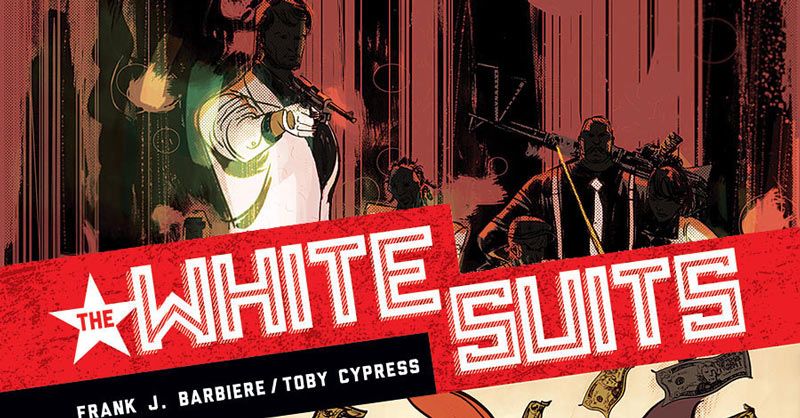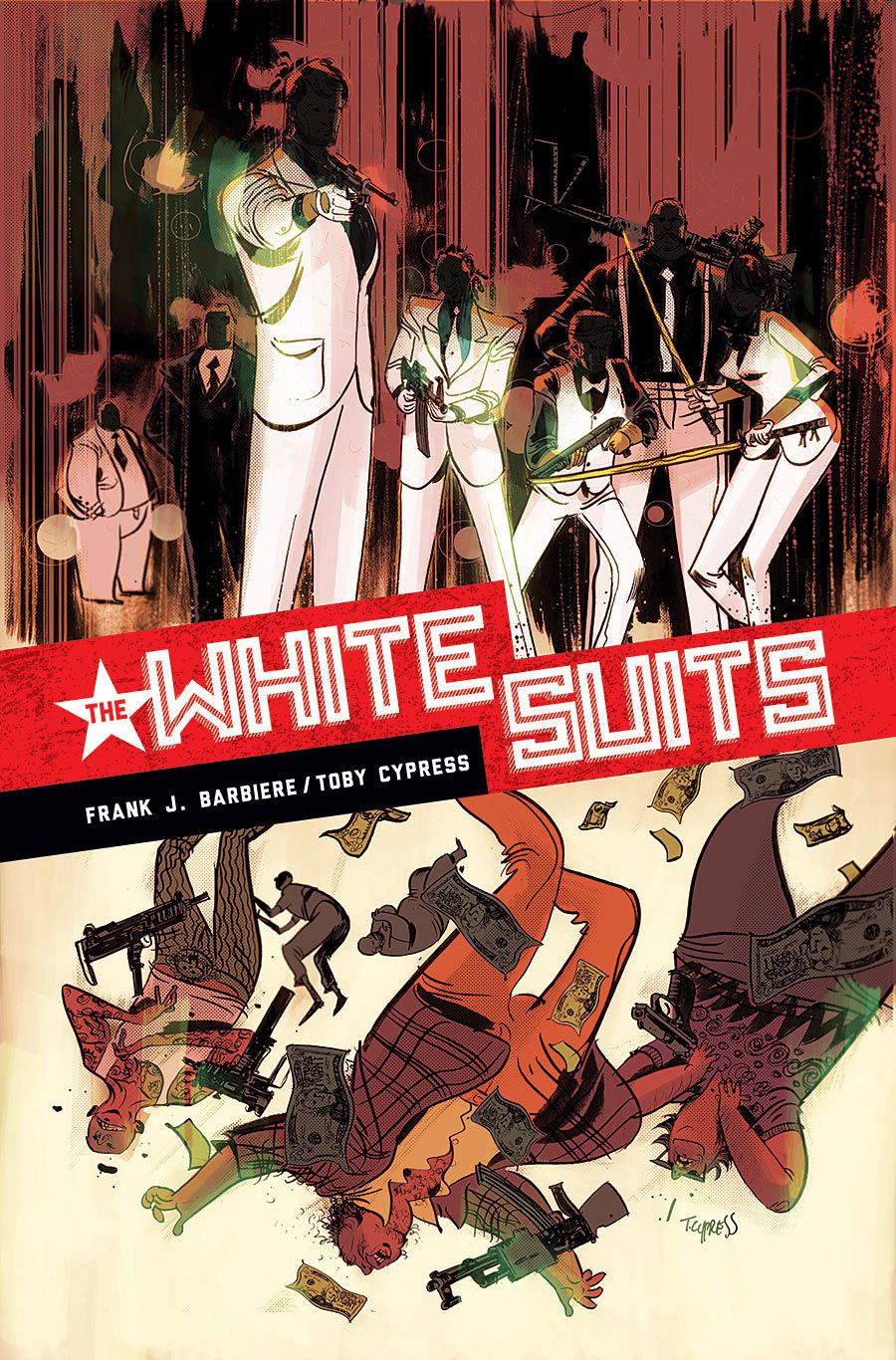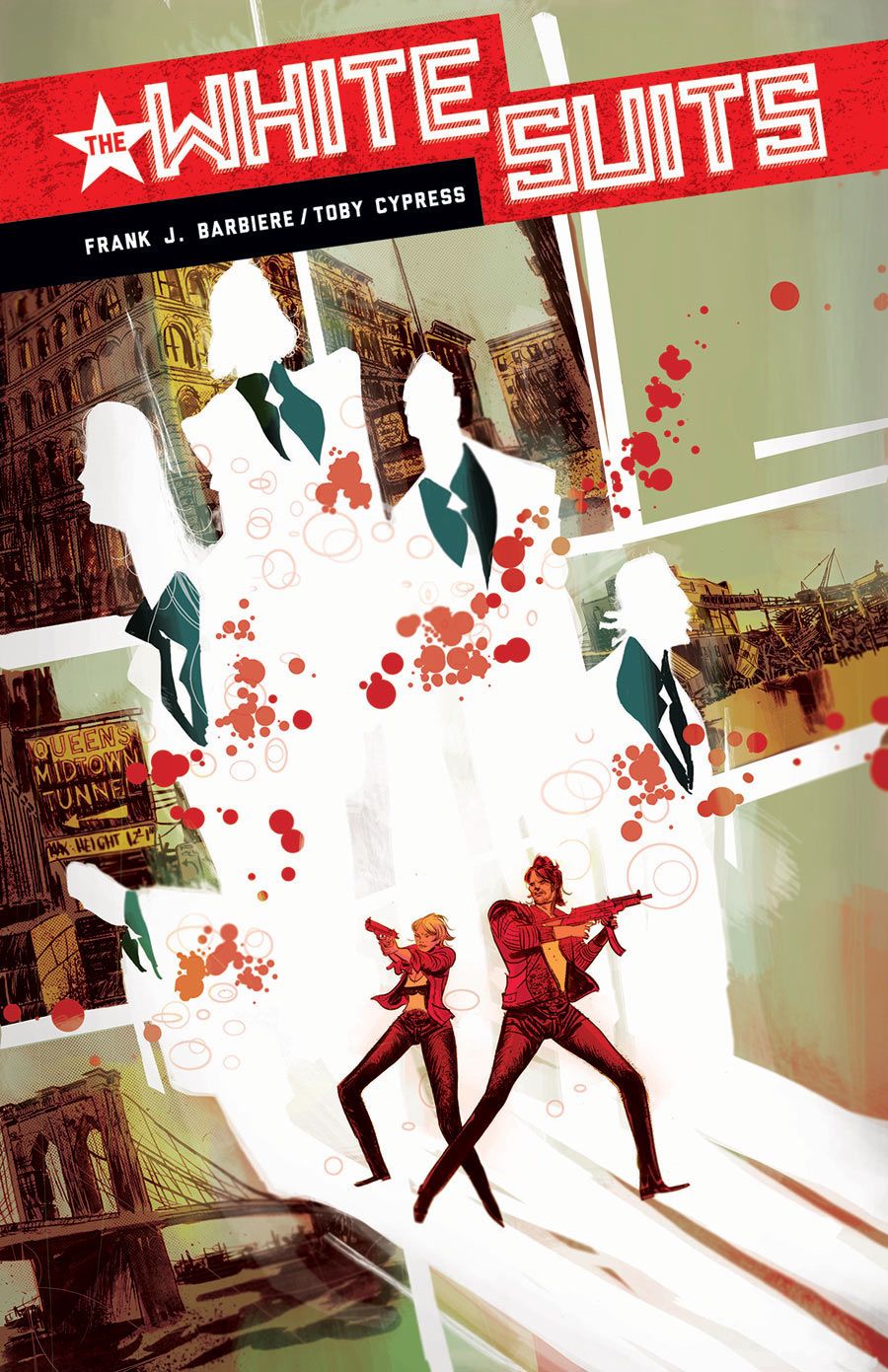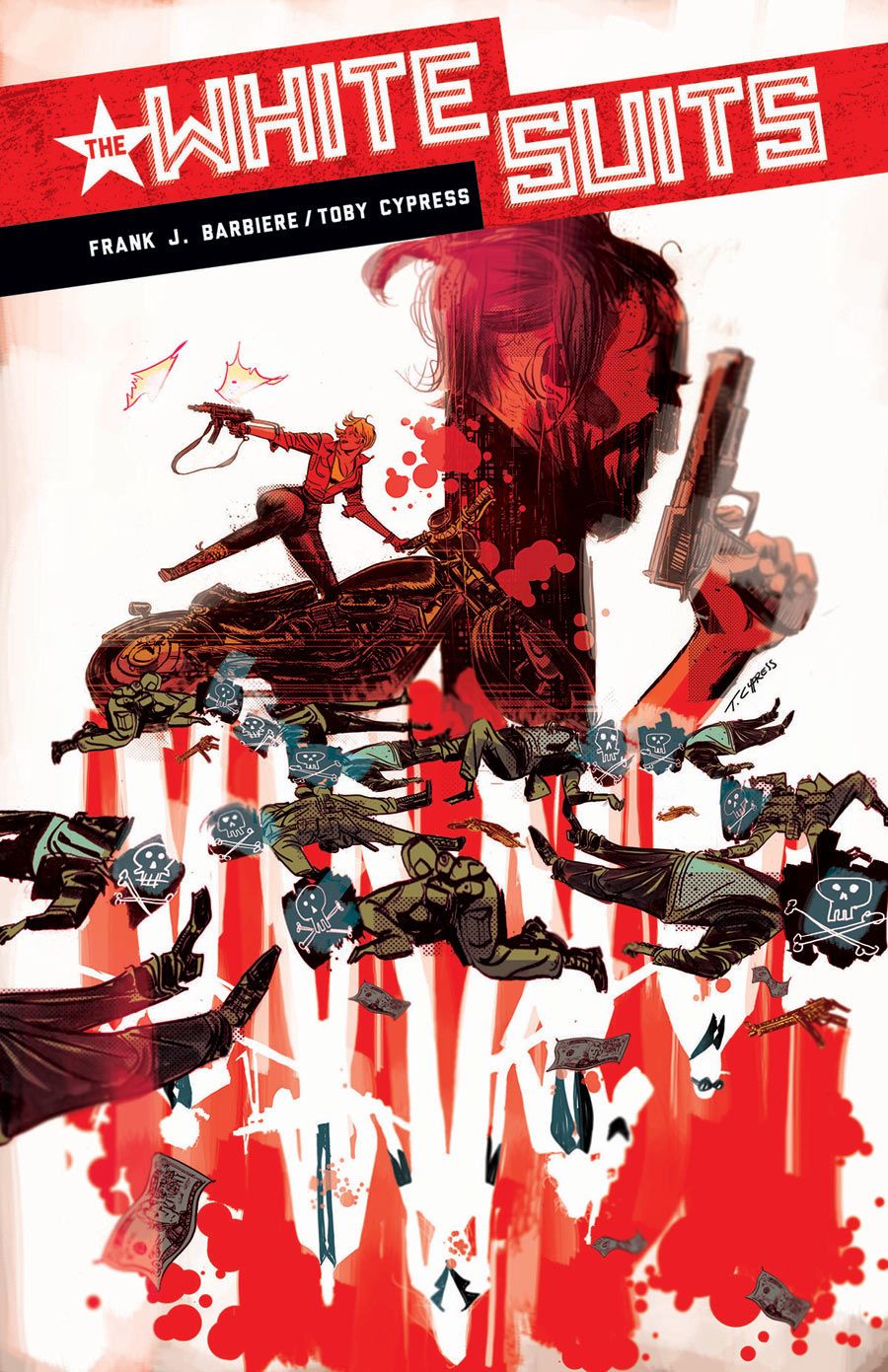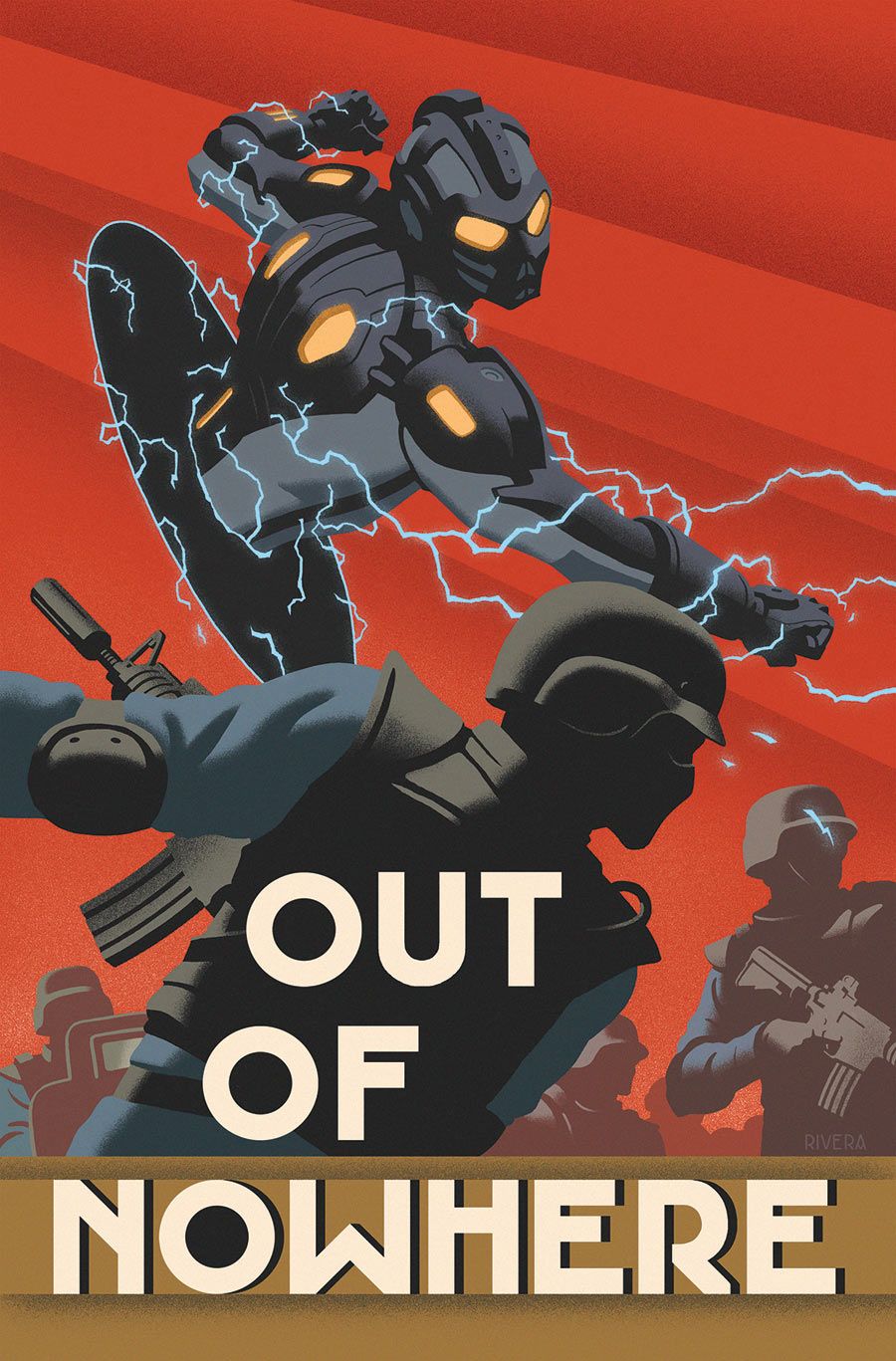The cabal of killers at the heart of Frank Barbiere and Toby Cypress' creator-owned Dark Horse comic "The White Suits" have been in hiding since the 1980s. And for Barbiere, it may feel like that long since he started on the crime comic.
Currently writing the Image Comics hit "Five Ghosts" and prepping for a number of new gigs, including a relaunch of "Doctor Solar" and continuing Dark Horse's original Project Black Sky superhero "Blackout" with artist Colin Lorimer, the writer actually broke into comics with a blind pitch for "The White Suits" a few years ago. Since then, the series launched in the pages of "Dark Horse Presents," changed artists and went through a round of revisions before the final story could be told. Now, with the miniseries hitting stands, Barbiere's tale of strange Soviet hitmen, an amnesiac former member and the rogue FBI agent determined to take them down is ready to roll out in striking visual style.
As "Five Ghosts" Hits the Seven Seas, Barbiere Spills on Its Future
With this week marking the release of "The White Suits" #1, CBR News spoke to Barbiere about the road to the comic. Below, the writer explains why dolling out the mystery of the White Suits made the series stronger, how finding a unique artist is central in making a comic work and what twists await in both his creator-owned life and in the pages of March's "Blackout" miniseries.
CBR News: Frank, it looks as though the journey to "White Suits" coming together has led to you becoming more a regular part of the Dark Horse line. What's your history with the publisher?
Frank Barbiere: "White Suits" is technically how I broke in. I know that "Five Ghosts" has kind of eclipsed by "Dark Horse Presents" work, but "White Suits" started in "DHP" #11, which was around April of 2012. So that predated everything. It's funny, because I love "Dark Horse Presents," but it's also harder to push that on people. I was waiting to see if we would do more, and we got to do a second and third short story in issues #19 and 20, and that led to this series.
Dark Horse operates very far in advance for many good reasons, so this miniseries has been brewing there for a long time. My editor Chris Warner has been very supportive of us and pushed for us, and I'm really happy to have the series ready and to have Toby on it, who's one of my favorite artists working today. He did this amazing job where it's technically in black and white with an ink wash, but then he goes back and does spot coloring with red and adds a few full color pages as well. I'm thrilled Dark Horse is letting us do the book this way, because it doesn't look like anything else. It's a very small team of me writing and him drawing everything.
And because I had such a good relationship with my editor, Chris brought up that they were doing more superhero stuff, and I was really happy that they threw "Blackout" my way because it's a brand new character that I got to develop with Editorial and Mike Richardson. It was a chance to go in without having to read a lot of older material and keep things in line with a reboot of some sort.
With "White Suits," how is the miniseries the culmination of the story you wanted to tell from the start? I know that the earlier "Dark Horse Presents" stories focused on these mysterious characters in the Cold War era in the '80s, but now we're in the modern day.
It's funny -- when I was originally developing "White Suits," it was a blind pitch. It was me trying to break into comics and thinking, "What I can I send them?" So the initial idea was to make something that would look crazy rather than some bland book that looked like everything else. I thought a striking visual style would help, and I wanted to do a crime story. So why not a group of criminals who all wear white suits? That allows us to do the book in hard black and white with spot coloring, and that helped it stand apart.
When it came time for me to start developing the narrative, one of the biggest influences on this was "100 Bullets." This is nowhere near the scope of that series, but what I wanted was a crime story that's both focused and has a big mythology behind it. And for "White Suits," rather than a case of mysterious bullets, I wanted the characters themselves to be the hook. There's this squad of mysterious killers running through the book with the phrase "Who Are The White Suits?" and what's interesting is that we've got two timelines. There's when the team originally formed and operated in the '80s, and then there's the modern time when our series starts.
What I sent to Dark Horse originally was the modern stuff from this series, and what they said was, "This looks really cool, but we're doing a lot of new stories in 'Dark Horse Presents.' Would you be willing to do a short story in this universe to build it up?" That was a happy accident for me because we had this dual narrative already, so I thought we could do the short stories from the '80s before the main narrative really started. It adds up to a 24-page issue that provides a lot of little pieces that will finally make sense to the people who have been reading from the beginning now that we're here. But the stories also work as little mystery stories on their own. People seemed to enjoy them, though some kind of went, "What the hell is this?" [Laughs] That's understandable, but it'll all be collected eventually. And since I've had this story planned out for so long, every character in the short stories will be revisited in some way in the main narrative.
Ultimately, this was a case where a lot of happy accidents made this fit together. That's particularly true of how Toby got involved because the artist who did the original short story [Luke Radl] walked away and didn't want to do comics anymore. There's no malice there, but I was kind of left hanging. My friend Giovanni Valletta came in and helped out on the second short story, but he was also very busy then. Since we were doing the second and third stories so close together, my editor said, "Why don't you reach out to someone you like?" And Toby was on the top of my dream artists who could draw this. I had met him very briefly as a fan at New York Comic Con in 2011. I'd been following his stuff and really liked it, and he just happened to have room in his schedule for this.
So Toby drew the third short, which takes place in the modern timeline. It introduced one of our main characters -- an FBI agent named Sarah Anderson who is investigating a warehouse crime. You get some background on her and why she's investigating the White Suits. The miniseries still works without that story, but it was the signifier that showed where we're going with this. Issue #1 of the mini starts right after the end of that short, and you can read the whole story on my Tumblr right now
Now that readers can get the full story in their hands with "White Suits" #1, how did you introduce this whole world you've been building in a way that allows for that easy access?
There are two hard core crime tropes we're riding here. We have two main characters: the FBI Agent, Anderson, who doesn't know who the White Suits are. She knows almost as much as the readers do at this point, which is a really fun entry point. On the other side, our second main character was actually a member of the White Suits. He's called Prizrak, and he's lost his memory. That's our very classic crime trope of a man with amnesia.
In that third short story, Anderson uncovered a file on Prizrak and goes off to find him. In issue #1, they meet up, but he has lost his memory, so he just knows he was a part of something called the White Suits and that he was basically executed by them. Between both of them, you get two sides of this story. She knows her father was involved with the White Suits and is chasing that ghost while Prizrak remembers only part of his life so you get to see what he's chasing and whether he's more than just a hired thug and has a deeper purpose. And we do get all the answers to those questions in the miniseries.
The series has a lot of flashbacks and mystery and action. The White Suits have resurfaced for the first time since the '80s, and now they're in New York starting this gang war. That's why Prizrak knows they're out there and operating again. He gets pulled back in via Anderson who's been chasing this obsession on her own. You'll understand exactly who the White Suits are by the end of this, and there is a grander deal to see, but it's not some kind of fantasy. This is all based in the real world, and the reveal in issue #4 will totally makes sense.
It's been great to have so much time to develop this. Having both the shorts and Chris as an editor to do this have helped in a huge way. It is a creator-owned book, but it's nice at Dark Horse to have someone who's been in the industry forever as a sounding board. He helped me bring the focus into the fore. We've reworked this and thought it all out. Doing this story helped me build the world in a real specific way and plan where everything will end up.
For your work overall, from "White Suits" to "Five Ghosts" and even into your work for hire gigs, I get the feeling you've been trying to give your books individual identities. Are you trying to avoid being labeled a "crime guy" or a "superhero guy" or anything like that?
That's been one of my constant fears. "Five Ghosts" was the big thing that broke, and I was very happy that it did. But everyone looks at that and goes, "Look at how pulpy this is!" My brother keeps making fun of me and saying, "Oh yeah, because you read so much pulp" -- which I don't! [Laughs] But looking at guys like Ed Brubaker, he's a crime guy, but I think he really has his own aesthetic. He understands the genre and then applies his own sensibilities to it. For me, that's the fun thing about doing this work. I have my own feelings about story. I was actually a writing teacher for four years and am a huge nerd about writing. I like characters and craft, and genre is just a specific kind of sandbox to play in. I've been really lucky to work in a few different genres so quickly.
I'm hoping that people who read my work will start to see a unifying thread between projects. I mean, hopefully that unifying thread is that it's all good. [Laughter] But there are some things that feel similar. Certainly, "Blackout" is very different from either "White Suits" or "Five Ghosts." And I love doing "Five Ghosts," which is a book that Chris and I can do whatever we want with. We have no editor at Image, so no one checks on us. It's just us doing our dream book. That's an awesome outlet to fall back on, which is a reason it's fun to go play in other people's sandboxes too. I love collaboration, and I don't shy away from working with editors or other writers. Sometimes it's nice to have other people in your corner. Definitely with the Dark Horse stuff, "Blackout" has been fun to build with Chris Warner and Mike Richardson -- to know what their sensibilities are and to shape the story to that.
With "White Suits," it's exciting because I'm operating in a genre that has so many modern stories right next to it. I have all of Brubaker's work and all of Brian Azzarello's work. I love "Sin City," which was very influential on me. My big concern when I first pitched this book was that Dark Horse was going to say, "Oh cool. You're ripping off 'Sin City.'" [Laughs] And yeah, it's black and white with some red visuals, but with Toby on board it's got some really insane visuals. There's a spread from #2 that's insane. Toby works in a style that's all his own. I've been really fortunate that one of the first things I learned in comics was that as good as you think your work is, it needs to be visually interesting. There has to be something cool about that. And all my artists have had their own thing going on, which is so significant. Art is so subjective, but even if you draw well, there might be nothing unique about it. For people trying to break in, you can be really good, but if you're not unique, no one will want to work with you.
On "Blackout," I spoke with Mike Richardson when the book was announced, and his focus seemed to be telling the story of an everyman. But looking at the art for the original run of "Dark Horse Presents" stories, it also visually stood apart from what you might assume is a kind of "Peter Parker-esque" superhero concept.
And that was all Chris Warner. The artist on those was Micah Kaneshiro, who is awesome. When I came into that, it was one of the very first projects where I didn't get to pick the artists, and Chris found him. I was so thrilled by that because it is a superhero story that's about an everyman getting a suit which gives him powers. That's a trope that can so quickly become tired, but getting that unique artist was an amazing move. It made those stories stand out, and as a writer, seeing that inspires me. They handed me that everyman concept with some notes from Chris, and I built a huge story bible from it. Talking with Chris, we've built this whole world that we're really excited to get to in the miniseries and hopefully push forward too. Clearly, Dark Horse is really invested in building this superhero world, and so I'm hoping that Blackout will be showing up a lot of places in the shared universe.
It's really cool to be handed a challenge like that and be asked, "How do you think a character like this should work?" As a writer, you're essentially being handed the easiest job. It's "We did the nuts and bolts work, now have fun with it." And across "Blackout" there's also this really cool mystery vibe because we don't show you where Scott got the suit. There are people who have disappeared, including his benefactor. The whole push of this series is him searching for his benefactor -- a scientist he worked with.
And the miniseries will be drawn by Colin Lorimer -- another fantastic artist who I think has his own visual style to bring to the table. It's another stroke of luck for me there. Colin is as far from "house" superhero books as you can get.
Project Black Sky is still in the early days of its overall development, as is "Blackout." How has the former affected what you're doing with the latter?
It's fun because it's something that's been in the works, and it's not something we've had to be overt with. That's why it's been fun to work with both Mike and Chris on the book, because they're always telling me something cool we can do or an Easter Egg to throw in to create connective tissue. We have a lot of ways "Blackout" ties into the bigger mythology they've built, and I think they'll start talking about that more with "Captain Midnight" rolling along. It's cool to just make things bigger. The worst thing that can happen there is having a character who sits off in their own little corner by themselves. Instead, there are elements in our story that play out that makes it matter in terms of the universe. The backbone and history that's there allows us to build towards something in our own book. It cements the character and makes them feel like an important addition to the line.
"The White Suits" #1 is in stores now from Dark Horse. "Blackout" #1 ships March 26.

